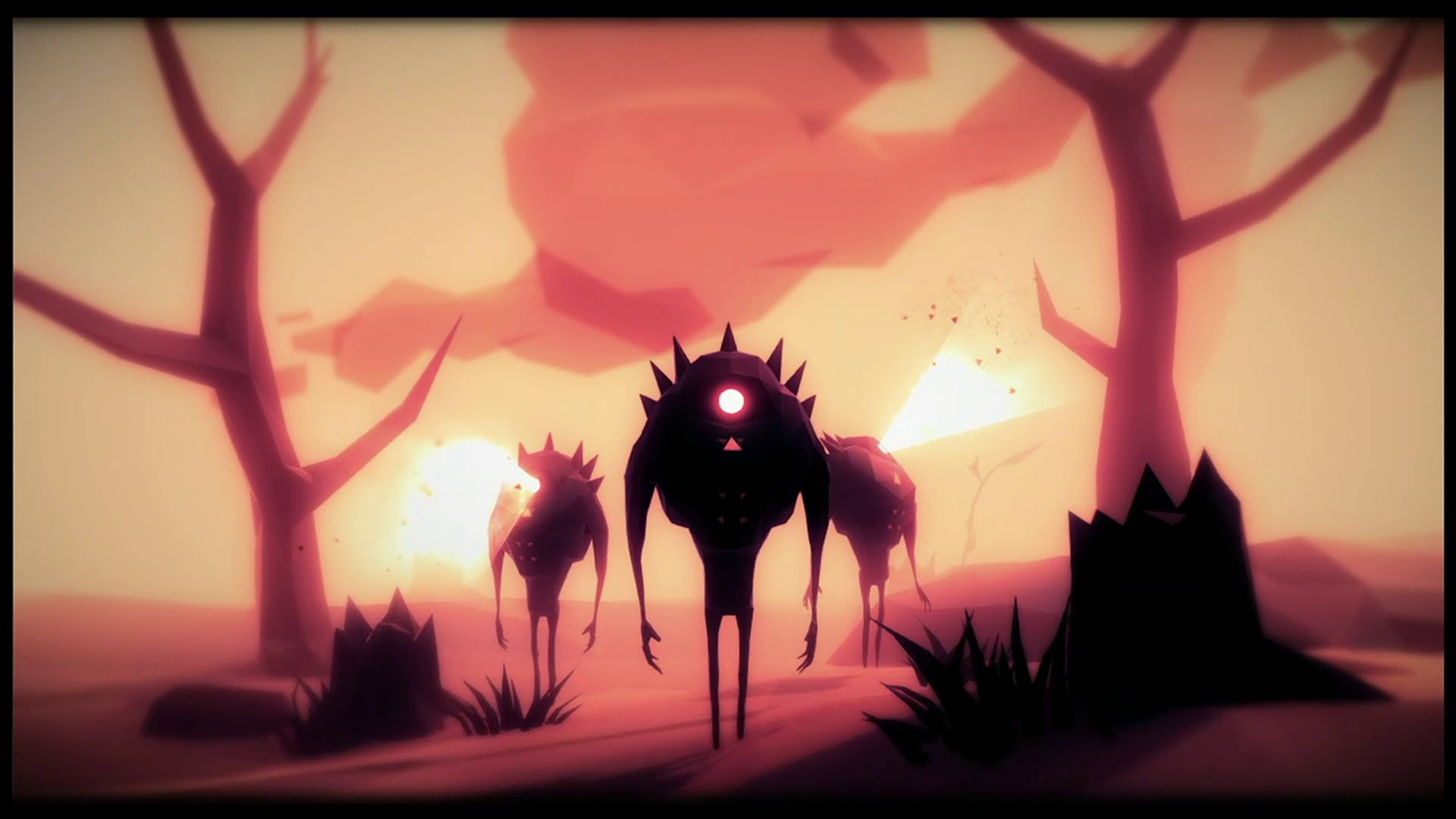
Despite a relatively brief gameplay appearance at E3 2017, Zoink’s Fe has us intrigued. Maybe it’s the EA Originals tag which has given way to the critically acclaimed Unravel. But the overall atmosphere and aesthetic looks fun. Will it be a tougher game though? How does the wordless narrative pan out? Why did Zoink go with EA in the first place?
To get the answers to these questions, GamingBolt spoke to Fe director Andreas Beijer who outlined the inspiration for the game and challenges going forward.
"In the world of Fe the forest is connected through a vocal energy that binds everything together. The forest is full of animals and plants that use this energy to communicate with each other."
Fe‘s story focuses on man’s personal narrative with nature. How did the team’s experiences with forests and wildlife fuel the vision for Fe?
Almost all of us at Zoink grew up in the countryside. We spent a lot of time in the forests as kids and we were quite free to explore and play there.
We tend to talk about different game ideas quite often so the idea of doing something with that same freedom came up. I remember telling about an encounter with a deer that I had. I was trying to sneak up to it without it noticing me, barefoot through the grass, and I was almost able to touch it before it ran away. Several of us had memories like that. So we distilled and mixed our memories of playing in the forest down to the game that is now Fe.
What motivated you to work with EA as part of the EA Originals program? What benefits has the program offered thus far?
We have released a few games prior to Fe, both independently and through smaller publishers. With Fe we felt we wanted the support that a bigger publisher would bring. We went talking to EA and showed them an early prototype of Fe. They were quite excited! They were just about to start up their EA originals program and they felt that Fe would be a good fit for that.
EA originals has honestly been awesome for us. They have given us great feedback and help without meddling with the creative side of things and enabled us to take more time to polish the game. We also have access to people testing the game in a way that we never had before, which is fantastic. We are truly happy with the collaboration.
A game with minimal narrative is tough to pull off. With Fe encouraging players to experiment, how do you go about teaching them the game’s more complex mechanics?
It’s quite tricky. We try to serve the challenges in a way that makes the player feel that they just happened to discover the things we try to teach them and we use the environment a lot to give hints. There are some instances where we have to tell the player what buttons to press to use a certain mechanic but we try to the let the player figure out what they can use the mechanic for. It takes a lot of testing to find the right balance. Our idea has been that the player should feel free but without too much frustration.
How do the game’s various mechanics and ecosystem interact with each other to allow for progression? What are some of the challenges you’ve faced in implementing this?
In the world of Fe the forest is connected through a vocal energy that binds everything together. The forest is full of animals and plants that use this energy to communicate with each other. Animals can sing to plants to have them do different things. You can also learn to speak to the forest yourself and have animals and plants help you progress further. Riding on deers, having plants give you berries that you can use and things like that.
I would say that it’s not so much about an ecosystem but more about getting to know the forest and the creatures and plants that lives there by communicating with them.
"I would say finding the balance of freedom without the player getting too lost is the hardest part to get right. It takes a lot of testing."
How would you say the “hands-off” aspect of Fe‘s gameplay works? Could you give us a few examples of the same?
As I said earlier, we aim for freedom but without too much frustration. We don’t want the player to be reluctant to explore out of fear of getting lost. We try to let the player understand as much as possible by themselves but we let the game help out when needed. For instance we have animals that can try to call for your attention and show you things of interest. However the player is also free to take detours and discover things on their own.
What are some of the challenges faced when balancing the game’s difficulty?
I would say finding the balance of freedom without the player getting too lost is the hardest part to get right. It takes a lot of testing. What we as developers feel is obvious isn’t always as obvious to the player. In a way, as developers, we live in the world of Fe on a daily basis, so we have to try to see it from the perspective of someone who has never seen it before.
Other than that our main focus is to make a game that is quite forgiving, even though there are parts of the game that are more challenging. You don’t need to be a hard core gamer to play Fe.
What kind of environments can players expect in Fe? Will there be a number of secrets and collectibles to find?
The environments are inspired by Nordic forests but a bit more mysterious and fantastical than the real thing. We have dense forests, open plains, mountains, coastal areas and other biomes where you find different animals and plants. There’s also remnants of an old civilization seen here and there. It is however an interconnected world without any load times between different areas. There are a lot of secrets and collectibles for the player to find. There are secrets that help the player proceed and those that let the player understand more about the world, its history and the dark two legged creatures that we call the Silent ones.
When implementing the control scheme for Fe, how did you strike a balance between responsiveness and simplicity versus complexity and more exploration-based functions?
We have focused on getting the movement right so that the player can move fluently through the environment. Run, then jump to a tree, then climb up the tree and throw yourself from the treetop and glide through the air and make all that feel like one coherent motion. We have tried to have all mechanics be smooth and playful like that so it doesn’t get in the way of exploration but rather entice the player to move around and explore.
"To try to answer the question in a broader sense, in my experience, developers always aim to do the best games that they can with the tools, the time and the resources at their disposal."
How long is a typical playthrough of Fe? Can we expect any additional content to be added down the line?
Since it’s a world where you can explore a lot by yourself and in your own pace it’s a bit hard to give an exact number of hours. However it’s absolutely not a triple A title with hundreds of hours of gameplay, it’s still very much an artistic indie game at its core. I usually think of the game world as being big enough to get lost in, but small enough to get to know. As for additional content I really can’t tell you. It comes down to how the game will be received.
When exactly will Fe release?
We don’t want to rush it so all I can say now is that it will be released early next year and will be available on PC, Xbox One, Playstation 4 and on Switch. We are still working hard to make everything in the game shine.
Will the game be receiving Xbox One X support and is it going to run at native 4K resolution and 60fps?
We haven’t tested it properly on that system yet so I can’t say. We will soon though so it’s going to be very interesting to see what we can do with that.
Given that Xbox One X is a radical overhaul of the Xbox One, do you see developers taking full advantage of the hardware?
It was just recently made available so I’d say it will take time before anyone is able to use its full potential. Making good games is quite hard work and takes a long time. To try to answer the question in a broader sense, in my experience, developers always aim to do the best games that they can with the tools, the time and the resources at their disposal. I guess, using the full potential of the X comes down to the question if it’s going to make the specific game you make a lot better, because it’ll probably take time away from doing other things that could benefit the game on all the other platforms as well. But honestly, I’ve yet to play a full game on Xbox One X so this is all hypothetical.
"Both PlayStation 4 Pro and Xbox One X have fantastic hardware specs so as usual I think it comes down to what games will be available to the players."
What are your thoughts on the console wars that is going on between PS4 Pro and Xbox One X?
I think that there always different views of what’s the better system. I remember the same discussion from a hundred years ago about the 8-bit NES and the Sega Master System. Both PlayStation 4 Pro and Xbox One X have fantastic hardware specs so as usual I think it comes down to what games will be available to the players.
Has the frame rate and resolutions for the base versions (PS4 and Xbox One) finalized?
We are still doing a lot of optimizing so I’m afraid it’s too early to say.
What are your thoughts on the Switch? How are you planning to use the console’s unique features for the game?
It feels great to release Fe on Switch. That’s something we really wanted to do because Fe is a game that we believe would work really well on that console and also, the Nintendo crowd is such a supportive, great group of people. As for unique features I don’t want to say yet because we’re still trying different things out.
Is there anything else you want to tell us before we let you go?
I really hope that everyone will enjoy Fe and thank you so much for your interest!

















